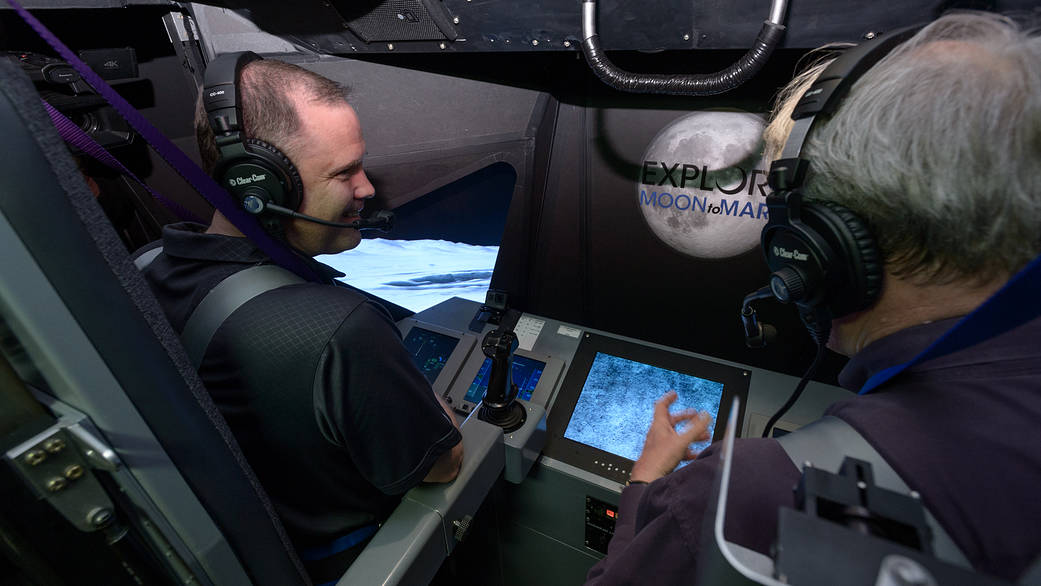
Before the next people set foot on the Moon, with a planned arrival in 2024, those astronauts will need to learn how to fly the spacecraft they’ll land on the surface. But how do you design controls for a vehicle, then train for a flight that literally can’t happen on Earth?
For cases where pilots should “fly” a vehicle before it can really be flown, you need NASA’s Vertical Motion Simulator. The VMS is the world’s largest motion flight simulator, moving within a ten-story tower at NASA’s Ames Research Center in California’s Silicon Valley. On Friday, May 31, NASA Administrator Jim Bridenstine (pictured left) visited the VMS, where he experienced landing a spacecraft on the lunar surface, in a highly realistic simulation. This included a cockpit configured like the Apollo Lunar Module, motion simulating the way the vehicle would really move, realistic feeling in the controls and visual cues out the windows provided by computer-generated images.
The VMS is primarily a research simulator, where designers can test out their ideas and optimize the performance of aircraft and spacecraft. However, it can be valuable as a training simulator, as was the case for the space shuttle. Every NASA shuttle pilot received training in the VMS, and future Moon-bound astronauts may as well.
Image credit: NASA/Ames Research Center/Dominic Hart


























